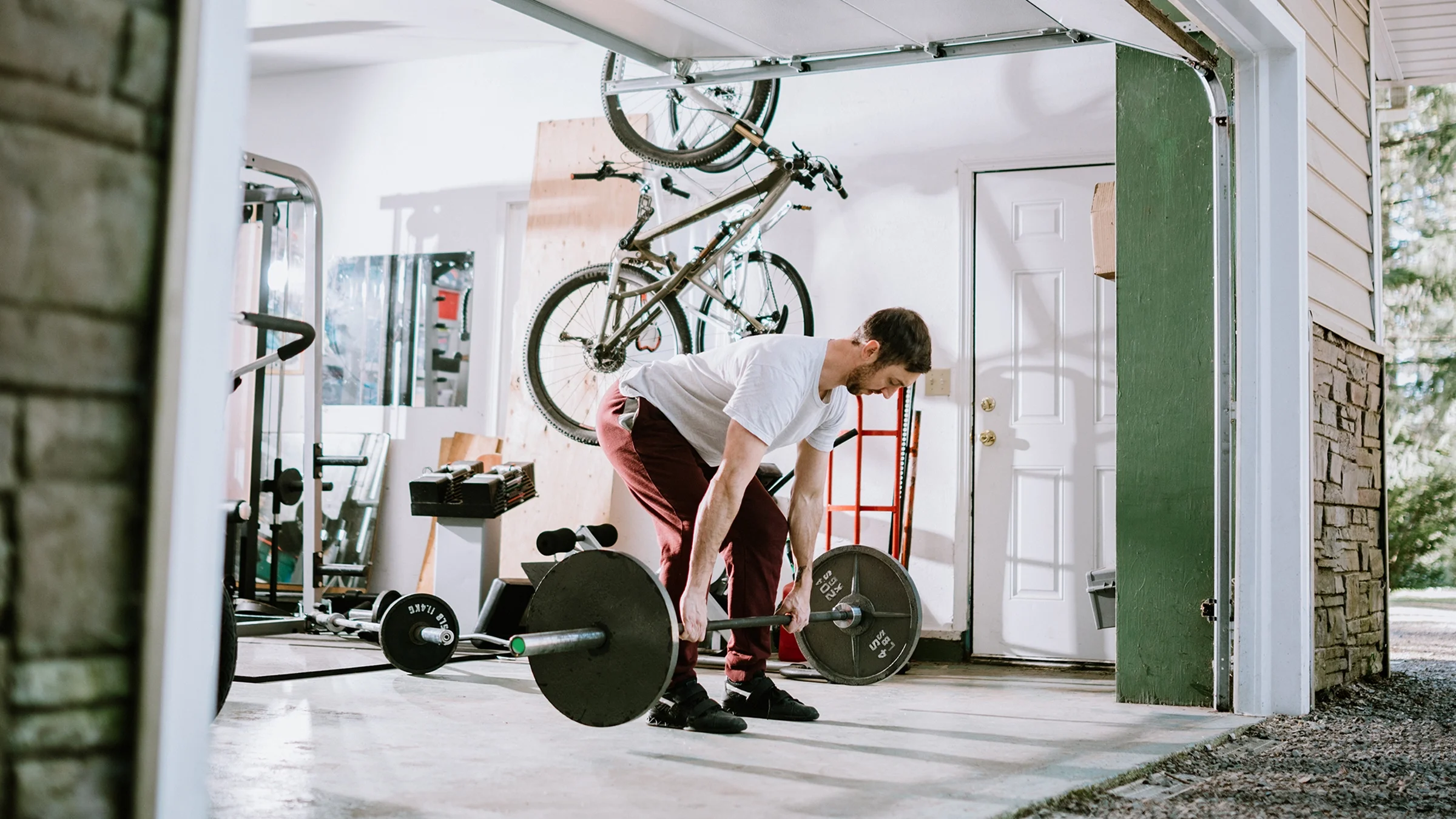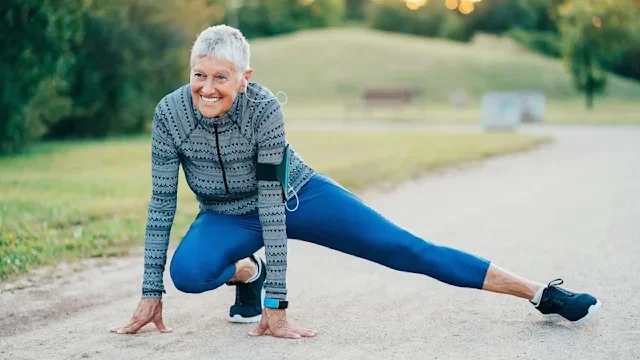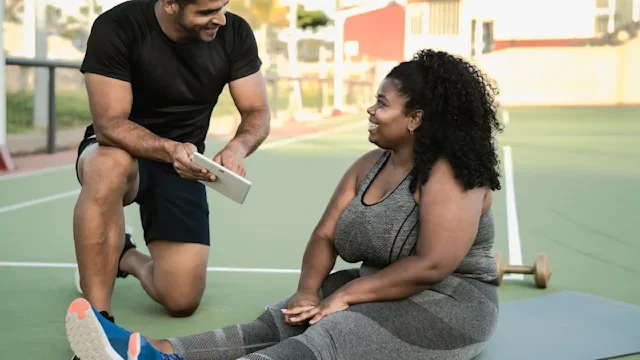Key takeaways:
When done with proper form, dead lifts aren’t bad for you. The resistance exercise is a great way to build lower-body strength and boost functional fitness.
Prioritize proper dead lift form and avoid common mistakes, such as rounding your back and lifting too much weight.
Although dead lifts are generally safe, you may need to avoid them if you have a back injury or a weakened core.
A dead lift is a go-to strength training exercise for many people. It involves hinging at your waist to lift a barbell from the floor. It works core and lower-body muscles, including your hamstrings, glutes, quads, and erector spinae in your back.
"Dead lifts can be essential to leg muscle growth and are one of the best exercises for back and glute strengthening," said Jasmine Owens, a certified personal trainer. "The biggest pro is being able to do them with different types of equipment, which makes it a very approachable exercise," Owens continued. Plus, there are numerous variations for people of different fitness levels.
Despite the many benefits of dead lifts, the exercise can stress your lower back, neck, and shoulders. And you might wonder if mastering the move is worth the risk. While a dead lift is a seemingly simple movement, proper form is crucial to maximize the benefits and minimize injury risk.
Search and compare options
Are dead lifts bad for you?
"Generally, dead lifts are safe when done correctly, with proper form and guidance," said Owens. The advanced weightlifting exercise can help you build total-body strength, boost metabolism, and improve functional fitness.
But a dead lift can result in a bad back day if you don’t understand how to do the movement, Owens explained. When done incorrectly, it can injure your back, spine, hamstrings, or knees. So, the safety of a dead lift depends on technique and control. "If you don’t have either, progressive loading may be a struggle and lead to injury," said Owens.
What are the most common causes of injury from deadlifting?
Research suggests that many deadlifting injuries result from factors like:
Lifting weight that’s too heavy
The large range of motion required during the exercise
Insufficient rest time between sets or sessions
Improper lifting technique
"I find that those who have no idea how to dead lift but still go about it, consistently injure themselves," said Owens. That’s why it’s so important to learn proper dead lift form. You want to keep the exercise safe from the setup to the hinge movement pattern and the lift itself.
Try to avoid the following mistakes when practicing dead lifts — and try these fixes instead.
Rounding your back or shoulders
According to Owens, rounding your back is one of the most common causes of injury when deadlifting. It can cause back strain or injury.
New to lifting weights? Check out these expert-approved tips for how to get started.
Don’t forget to warm up. Try these warmup exercises to prevent injuries and get the most out of your strength-training sessions.
Pendlay row vs. barbell row: Find out which weightlifting exercise is better for you.
How to fix: Engage your abdominals and the muscles between your shoulders to avoid this mistake. Imagine pulling your shoulder blades together and down toward your hips to keep your spine neutral, back straight, and shoulders down.
Not engaging your core
If your core isn’t engaged during a dead lift, you’ll be less stable while lifting, and your lower back will take over. This can lead to form mistakes like rounding your upper back and shoulders.
How to fix: Think about stacking your rib cage over your hips to engage your core.
Read more like this
Explore these related articles, suggested for readers like you.
Lifting too much weight
As with any weightlifting exercise, it’s important to start light and gradually lift heavier weights as you get stronger. Experts suggest increasing weight by 2% to 10% when you can do 1 to 2 more exercise reps than your usual max. This gives your muscles time to adjust to increasingly heavier weight.
How to fix: "Progressive overload is also a safe way to prevent injury for deadlifts," said Owens. "My best practice is starting with a very light warmup round before my work and then slowly adding weight each week."
Lifting the weight with your arms
It might sound strange, but you want to lift from your hips when doing dead lifts. Your arms should only be used to hold the weight, not pull it. Keep your arms straight and close to your body while lifting.
How to fix: Think about pushing the floor away from you with your lower body as you stand, instead of pulling the barbell off the floor with your upper body. This technique can help protect your arms and lower back from strain.
Lifting the weight too far away from your body
Correct bar placement can help prevent overloading your lower back. If you hold the bar out and away from your body, it increases strain in your low back as you do the lift, said Owens. This is because the bar weighs more when you hold it away from your body.
How to fix: When you line up with the bar, position it over the midpoint of your foot, close to your shins.
Rushing the movement
The goal is to perform a dead lift slowly and with control. When you rush the hinge movement, you don’t give your hamstrings enough time to fully stretch and activate. Rushing the lift can compromise your form, which increases your risk of injury.
How to fix: Slow the movement way down. Each dead lift repetition should take at least 5 seconds as you lift and lower the weight.
What’s the right form for deadlifting?
The first step to preventing injury while deadlifting is to start with a proper warmup, according to Owens. From there, focus on the setup to ensure correct dead lift form.
Step 1: Stand with your feet hip-width apart, with the barbell over the midpoint of your foot.
Step 2: Hinge forward from your hips toward the bar with a flat back, and a slight bend in your knees.
Step 3: In the hinge position, place your hands on the bar, just outside of your legs.
Step 4: Pull your shoulders down away from your ears, and armpits toward your hips to keep the bar close to your body.
Step 5: Engage your core by imagining keeping your ribcage in-line with your hips.
Step 6: Lift the weight from the floor by reversing the hinge movement, using the muscles in your hips and the back of your thighs. Keep the bar close to your body and push the floor away from you until you’re standing.
Step 7: Slowly hinge at your hips again to lower the weight back to the floor.
When should you not do dead lifts?
Dead lifts can be an approachable exercise suitable for many people. But Owen said some people may need assistance doing dead lifts, while others may need to avoid them. This includes people with back pain or injuries, weakened core muscles, and limited hip or hamstring mobility.
Talk to a healthcare professional if you’re not sure if dead lifts are safe for you. Although you can modify a dead lift, it still requires a strong core and proper muscle engagement, said Owens, who recommends avoiding this advanced exercise until you’re ready.
The bottom line
It can be hard to master a dead lift. The exercise requires core strength and stability. But when done with proper form, it’s generally safe and effective. You can practice dead lifts without weights to learn the basic movement. Then, start with a lighter barbell, prioritizing form over resistance. Once you get the hang of the exercise, you can reap benefits like improved functional strength and better athletic performance.

Why trust our experts?



References
Bengtsson, V., et al. (2018). Narrative review of injuries in powerlifting with special reference to their association to the squat, bench press and deadlift. British Medical Journal Open Sport and Exercise Medicine.
Martín-Fuentes, I., et al. (2020). Electromyographic activity in deadlift exercise and its variants. A systematic review. Public Library of Science One.
Medicine and Science in Sports and Exercise. (2009). Progression models in resistance training for healthy adults.
National Academy of Sports Medicine. (2021). How to do a barbell deadlift–proper form and technique [video]. YouTube.

















